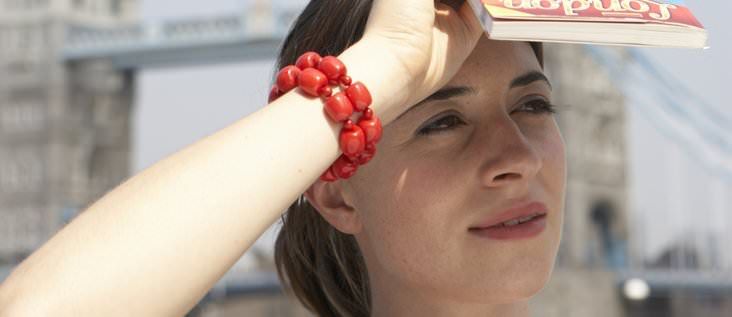Most of us know the importance of sun protection for our skin. That is why we slather on the SPF sunscreen when we are headed outside to eyjoy the sunshine! However, many of us don’t know that those same damaging ultra violet radiation waves (UV) that we protect our skin from, can cause irreversible sun damage to eyes. Often with our skin, harm from UV is noticed not long after sun exposure, usually in the form of a sun burn. And, even though our eyes can suffer a sun burn as well (photokeratitis), the harm done to our eyes by UV is often not evident for years after cumulative sun exposure.
Cataracts
Cataracts are one of the most common causes of decreased vision and vision loss, in people over age 40. World wide, cataracts are the principal cause of blindness. A cataract is a clouding of the crystalline lens that lies behind the pupil, within the eye. With the help of our focusing system and muscles within the eyes, the lens flexes to change shape. This flexibility allows for light to focus on the retina (back of the eye) to allow for clear vision at different distances. As we age, the crystalline lens starts to become cloudy or more opaque, making vision harder to see. Although cataracts often form as a direct correlation with the natural aging process of the eyes, there are some added factors that can cause cataracts to start to develop sooner and at faster pace then normal. One of these factors is ultraviolet radiation (UV) from sunlight which causes sun damage to eyes.
Macular Degeneration
Macular degeneration is another fairly common eye disease that tends to occur later on in life. The macula, is a small area in the retina (the back of the eye) that is responsible for seeing fine detail. It is responsible for our central vision and determines our ability to perform most activities and visual tasks. Degeneration of the macula, results in vision loss and damage to the central vision. Just like other eye conditions and diseases, there are many factors that play into why a person may develop macular degeneration. A family history of macular degeneration, smoking, and high blood, along with over-exposure to sunlight which causes sun damage to eyes, are just a few contributing factors as to why a person may development this disease.
Pinguecula
A pinguecula is the thickening of the clear membrane (conjunctiva) of the eye, that rests over the white part (sclera) of the eye. This thickening of the conjunctival tissue often attends to appear as a yellowish coloured, slightly raised bump. They typically appear off to either side of the cornea. This is because, this area of the eye, lies between your eyelids and is at greater exposure to the sun. UV radiation from the sun, is the primary cause of the development of pinguecula. This is why they are common in people who spend a lot of time in the sun.
Pterygium
A pterygium, is another common eye condition that tends to affect people who are at a greater exposure to UV rays, and spend a lot of time outdoors. Just like a pinguecula, a pterygium is a growth of the conjunctival tissue that forms on either side of the cornea and is also a result from sun damage to eyes. The difference being, that a pterygium grows onto the cornea (clear dome over the pupil). A pterygium is often not a serious eye condition. However, in advanced cases they can grow far toward the center of the cornea, this can cause a change in shape to the cornea resulting in blurred vision, it can also cause a decrease in vision or even vision loss if it grows too big, or covers too much area of the cornea. A significant factors which increases the risk of developing pterygiums and other problems related to sun damage of eyes, is prolonged exposure to UV light.
Photokeratitis
Photokeratitis (ultraviolet keratitis), is sun damage to eyes, kind of like a sunburn. It is a very painful condition which is caused by overexposure of UV light to the conjunctiva and cornea of the eye. Just like a sunburn to the skin, the pain and discomfort of photokeratitis of the eyes, usually appears several hours after sun exposure. Symptoms include pain, like having sand in the eyes or dry eyes, tearing of the eyes, and light sensitivity. The main way to prevent a photokeratitis injury, is by wearing eye protection that protects against UV radiation.
Protecting Your Eyes Against UV Light
One of the best ways to protect our vision and the health of our eyes from sun damage to eyes, is by wearing sunglasses. When selecting a good pair of sunglasses, make sure that the lens of the sunglasses contains a high level of protection from both UVA & UVB light. Also make sure the lens and frame of the sunglasses provide good coverage, and doesn’t allow for much extra light to escape around the lens and frame to enter the eyes. Limiting sun exposure time, especially during mid day when the level of UV light in the atmosphere is at it’s highest, is also another great way to help protect the delicate skin of the body from UV. Although, enjoying the sunshine is so nice, we have to be sun smart and protect ourselves from it’s harmful rays.
Article Written By: Trina Vanaalst

